Marantz Model 2226B receiver
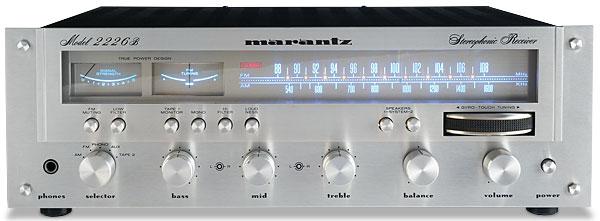
 Buy one of these late-'70s beauties secondhand today and you'll own an amp from a pedigree name with radio thrown in for 'free'. So, is this a receiver worth considering?
Buy one of these late-'70s beauties secondhand today and you'll own an amp from a pedigree name with radio thrown in for 'free'. So, is this a receiver worth considering?
The receiver (tuner/amplifier) has always divided opinion, in the UK at least. While popular in Europe and the US, the British market never embraced these units to the degree it did separate tuners and amplifiers. And this wasn't because they could not rival a two-box counterpart on performance due to any technical reason. The real issue was that two top-quality units built into one housing could result in an indivisibly expensive product, one many consumers may not have been able to afford.
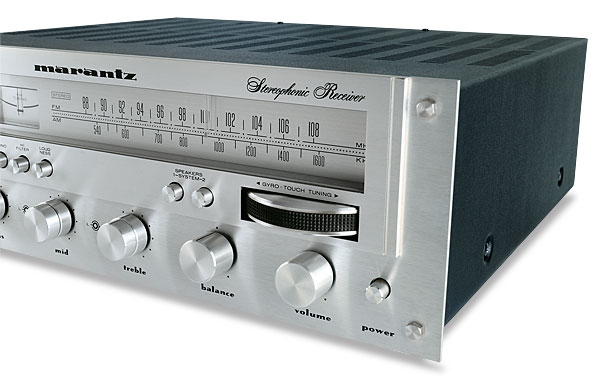
The major manufacturers of receivers in Europe included Braun and B&O, but as a rule the behemoths produced for the US market were not readily available on UK shores. There were exceptions to this, of course, but the largest selection of models came probably from Marantz.
Power Couple
The company's range of receivers for the 1978 season was impressive for both the breadth of choice and the quality of what was on offer. No fewer than 14 models were listed, ranging from the budget 1515 to the top spec 2600. The same series also featured the mighty 1300DC integrated amplifier [HFN Feb '14] which, on paper, was rated at 150W into 8ohm across the full 20Hz-20kHz audio frequency range.
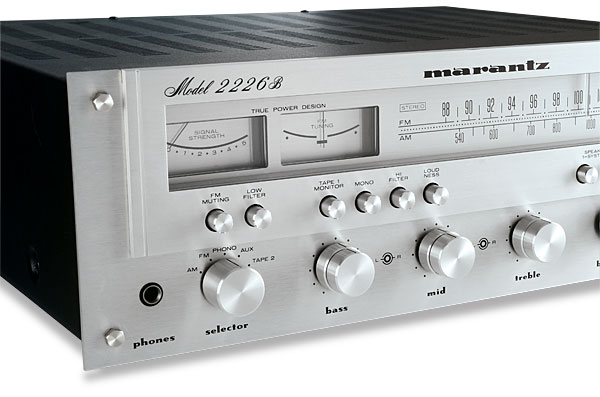
Impressive as this specification was, Marantz's flagship 2600 receiver doubled that figure. This model claimed a full 420W (at 1kHz into 4ohm) making one of the most powerful receivers available at the time. Furthermore, it backed up this epic amplifier performance with an advanced tuner section that included an oscilloscope display to facilitate the most accurate tuning.
Six further models separated the 2600 from the Model 2226B seen here, but viewed in isolation the specification of the latter could still be considered generous. It was rated at just over a sixth of the power at 26W/8ohm [though higher in practice] but it was still a substantial unit that looked the part.
On The Fly
Over the lesser 2216B, which was built onto a slightly smaller chassis, the Model 2226B offered dual-concentric tone controls for treble, middle and bass, a centre tuning meter and a high (scratch) filter. The 2226B had in fact been a re-design of the previous year's 2226. As well as a re-styled fascia, the new model benefited from simplified internal construction with sensible rationalisation of some of the assemblies – for example, the power supply regulator and power amplifier PCBs had been combined into one. The circuits themselves were largely unaltered aside from a few detail updates, the basic performance parameters of both versions being essentially the same.
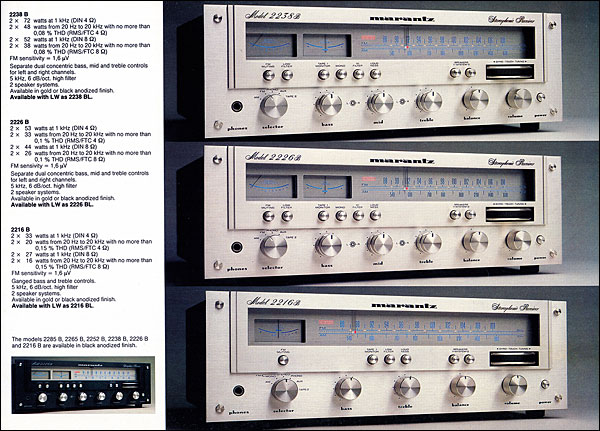
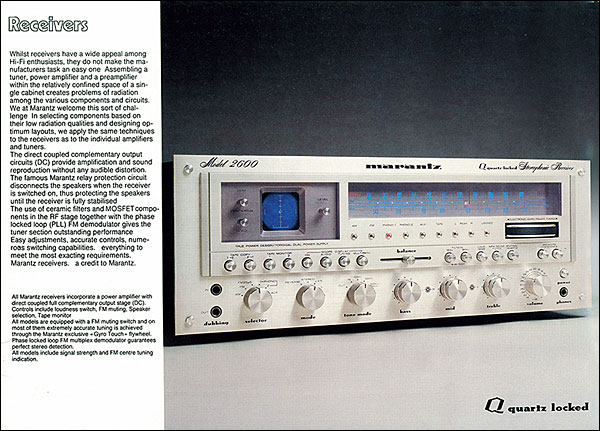
Like most Marantz receivers to appear that year, the radio tuning was operated by a flywheel mounted horizontally known as 'Gyro Touch', a distinctive feature that was unique to the company. As well as offering complete coverage of the MW and FM bands, inputs were provided for a turntable (MM cartridge), two tape recorders (one with a monitoring loop) and an auxiliary line level source. This would later become the ideal way to hook up a CD player to the system. Buyers would also have the option of the Model 2226BL, which added LW coverage to the tuner. Additionally, a black anodised fascia could be ordered as an alternative to the traditional Marantz champagne gold.
Damp Proofing
Technically the 2226B was conventional but generously executed. Marantz stressed that DC coupling was used between the amplifier's output transistors and the loudspeaker load with no transformers or capacitors to get in the way. This was common in the better classes of equipment of the day, but still not universal. DC coupling helps maintain the amp's damping factor (eg, its ability to control and position a woofer cone accurately) at low frequencies. This is not the case with transformer or capacitor coupling and, provided the amp is correctly designed and its power supply can cope, DC coupling will typically result in tighter and cleaner bass, especially at high listening levels.
The tuner also followed the standard practice for a quality design of the late 1970s. In particular, the stereo decoder was constructed mainly on an integrated circuit and used the phase locked loop (PLL) principle to give good separation, even when signal strength was less than optimal. Mechanical tuning was utilised with a five-gang variable capacitor (three for FM, two for AM), the bulk of the signal processing being performed by a standard Hitachi chipset comprising three parts.
Aside from the radio, the main source with which receivers were expected to be used was, of course, a turntable. To obtain the best performance, a three-stage RIAA equalising amplifier was employed (two stages were the norm at this level at the time), running from an elevated voltage of 33V to achieve decent headroom.
One of the great things about the Marantz 2226B is that if you didn't know there were seven models above it in the range you could easily believe it was a fairly top-end product. It is pleasingly large, impressively heavy at 11.5kg, and immaculately finished. There are a few ergonomic quirks (why, for example, are the high and low filter switches in separate, unrelated banks and not placed together?) while the split tone controls for each channel are somewhat pointless. But otherwise this is a pleasant unit to operate.
























































